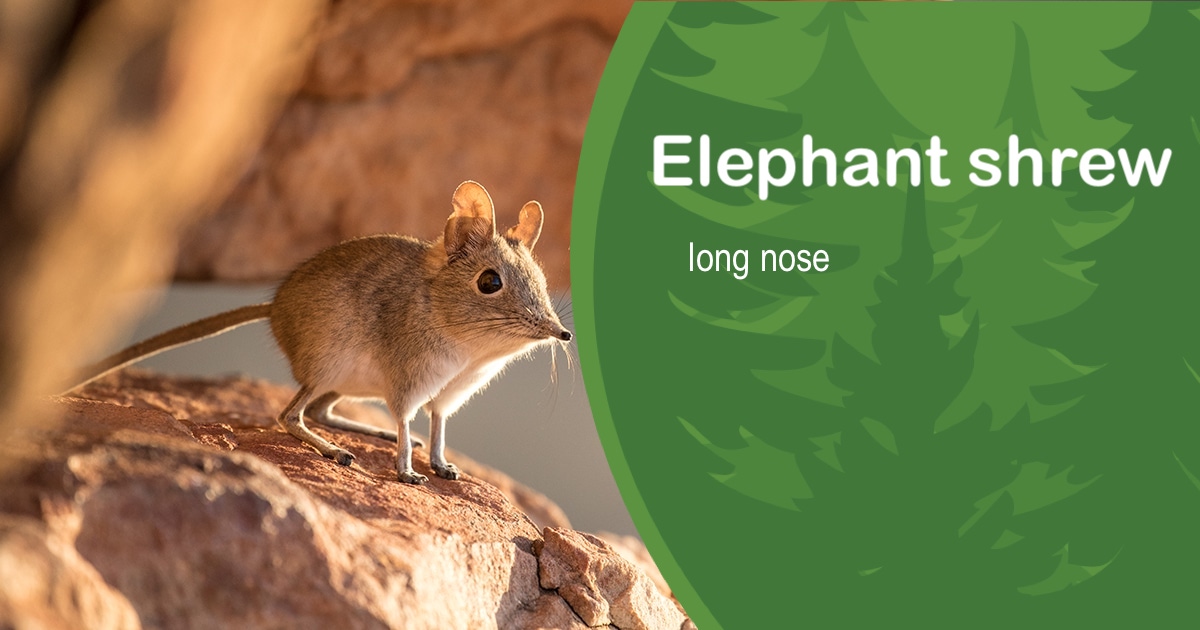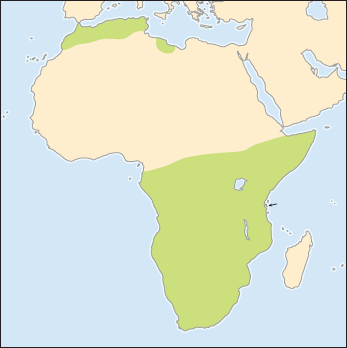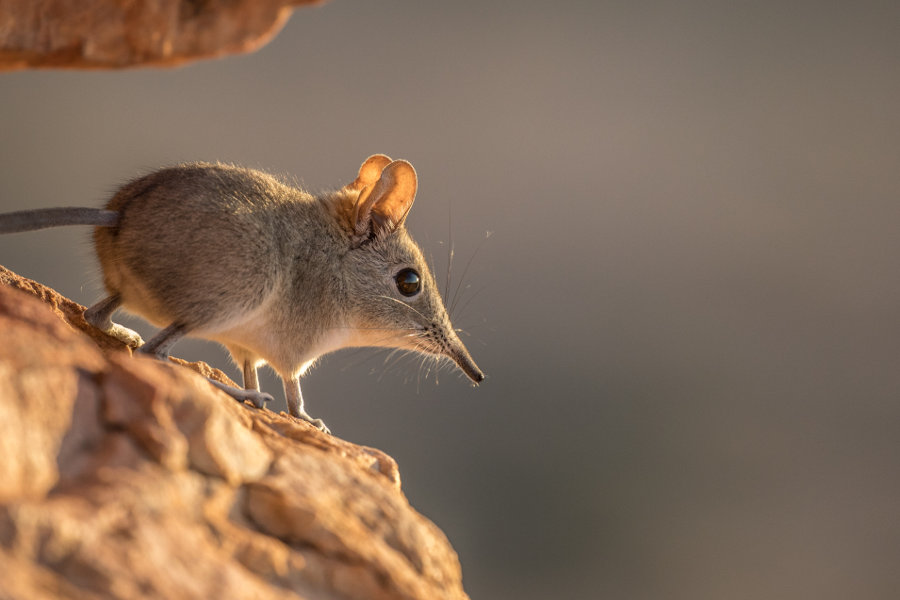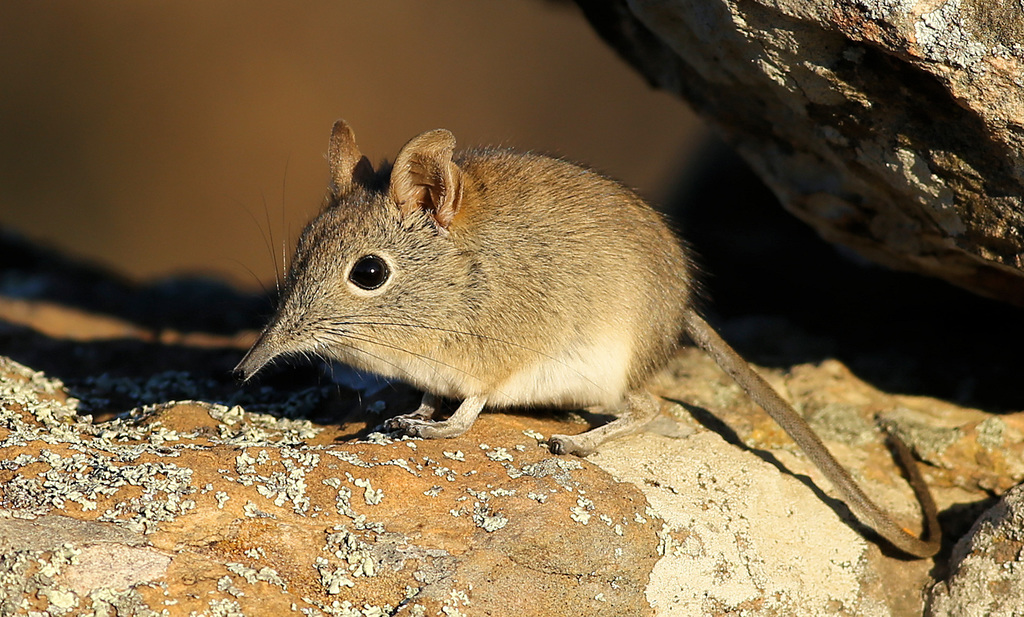STATUS
Near Threatened


Elephant shrews are not rodents, but do resemble hunchbacked mice, or gerbils in their shape. They are also not true shrews but are more closely related to tenrecs, golden moles, and aardvarks. Their most noticeable feature is an elongated snout, which they can twist and turn when searching for invertebrate prey (insects, worms, and other creatures without spines). Their rear legs, which they use for hopping like rabbits, are considerably longer then their forelegs.
Elephant shrews have scaly, almost furless, tails under which is a scent gland they use for marking their territory. They have large, erect ears and many species have a pale circle around their relatively big eyes. Some of the larger elephant shrews are rather brightly colored, such as having an almost black body, but a ginger neck and head. The smaller elephant shrews tend to be brown or gray.
Some species have a "dermal shield" of thickened skin on the rump. The skin there is three times thicker than the skin on the back, and provides protection against the bites of other elephant shrews.
In some countries, such as Kenya, elephant shrews are trapped and eaten by humans. Their main threats are from deforestation, habitat loss, and habitat fragmentation due to agriculture and logging.

STATUS
Near Threatened

SCIENTIFIC NAME
Macroscelididae

POPULATION
Only 24,000 left

LENGTH
4 to 12 inches

WEIGHT
45 to 540 grams

HABITAT
FORESTS

The elephant shrew eats "leaf litter invertebrates" such as ants, termites, beetles, spiders, millipedes, and earthworms. Unlike many other small mammals, the elephant shrew feeds during daylight. They play a significant role in maintaining natural checks of insect populations.
Elephantulus revoilii, commonly known as an elephant shrew, has been lost to science since 1968, prompting Global Wildlife Conservation (GWC), an NGO that works to protect endangered species and ecosystems, to list it as one of its 25 most wanted lost species.
Elephant shrews do not make good pets. The fact that they are shy and mate for life indicate they would be boring as pets. Some states don't allow such wild animals to be captive. In others you may need a special permit.
Deforestation and the habitat fragmentation that comes with agriculture and logging both have had a devastating impact on the elephant shrew population.
An estimated 15,000 to 24,000 elephant shrew exist in the wild-historic population data is unknown-and the International Union for Conservation of Nature lists them as vulnerable




